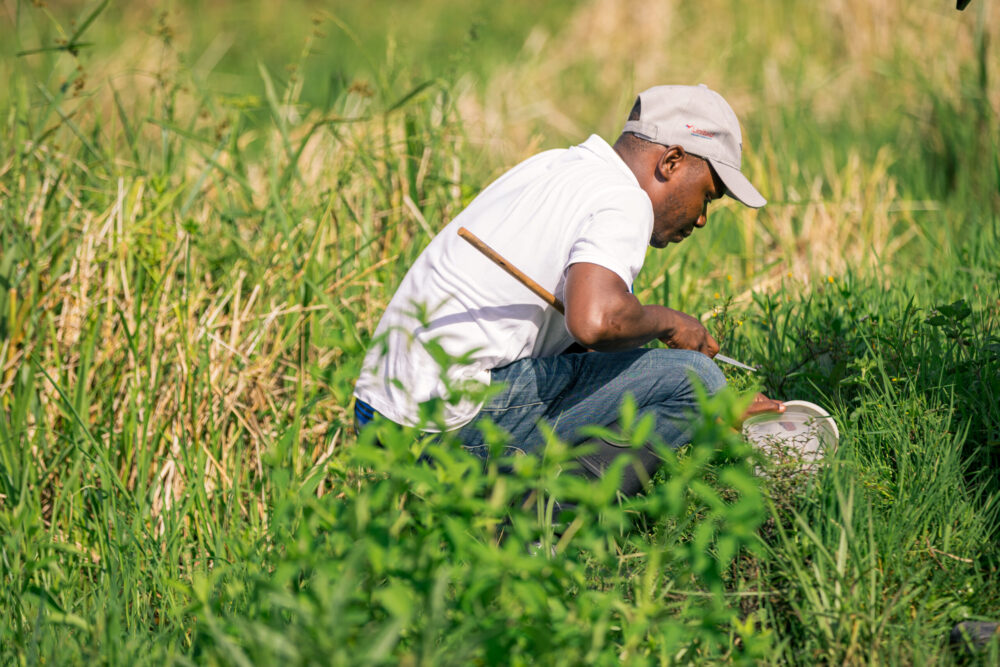Interview with Miguel Gerson, Entomologist in the BOHEMIA project

Can you tell us about your background and how you became interested in entomology?
I became passionate about entomology during my first encounter with the Tsetse fly and trypanosomes in Busia County. The concept of parasite and vector ecology fascinated me. Capturing tsetse flies using traps, extracting the deadly trypanosome parasite, and observing it under a microscope sparked my deep interest in the field.
Capturing tsetse flies using traps, extracting the deadly trypanosome parasite, and observing it under a microscope sparked my deep interest in the field.
Growing up in Kenya, I frequently saw reports of malaria cases surging during the rainy season, especially in my home county near the lake region. Seeing people suffer and hospitals overwhelmed with long queues of mothers and children suffering from malaria further fueled my desire to understand the role of insects like Anopheles mosquitoes in transmitting this disease.
What is the role of an entomologist in the BOHEMIA trial testing ivermectin as a vector-control tool?
In the BOHEMIA project, I coordinate field activities, ensuring that both field and lab-based entomological work adheres to ethical standards. My responsibilities include overseeing the processing, storage, and shipping of mosquito samples, conducting insecticide resistance tests, performing ivermectin bioassays on mosquito populations, and attending project briefings with local authorities. Additionally, I contribute to writing scientific publications and disseminating findings at conferences.
Can you shed some light on the mosquito species and their behaviors that are responsible for malaria transmission in Kenya?
In Kenya, malaria transmission is primarily driven by the Anopheles gambiae complex and Anopheles funestus complex, which are the main vectors of the disease. Anopheles arabiensis, another malaria vector found in Kenya, is notable for its outdoor feeding behavior, which makes interventions like indoor residual spraying and insecticide-treated bed nets less effective. This underscores the need for integrated vector control strategies that target mosquitoes both indoors and outdoors. Other mosquito species, such as culicines, are present but do not play a significant role in malaria transmission.
Anopheles arabiensis, another malaria vector found in Kenya, is notable for its outdoor feeding behavior, which makes interventions like indoor residual spraying and insecticide-treated bed nets less effective.
What about resistance to insecticides?
A significant part of my research in Kwale has focused on assessing the insecticide resistance status of key malaria vectors. We conducted phenotypic tests for the four classes of insecticides currently approved by the World Health Organization for vector control: pyrethroids, organochlorines, organophosphates, and carbamates. Our findings revealed resistance to pyrethroids, specifically permethrin and deltamethrin, both of which have been used to treat bed nets distributed in Kenya. We hope that the results of this research will provide valuable evidence to guide decision-making in the national malaria program.
How do you envision the future of entomological research in Kenya, particularly in relation to disease control?
Entomology has grown significantly in Kenya, with various research institutes collaborating with parastatals, public, and private universities. Senior scientists are mentoring early-career researchers to design innovative research projects. For instance, microsporidia are being used as a biological control for malaria vectors, while Wolbachia bacteria are being deployed to target Plasmodium parasites. Additionally, gene drive technology is being explored to manage malaria vector populations. These are exciting times for entomological research in Kenya.






